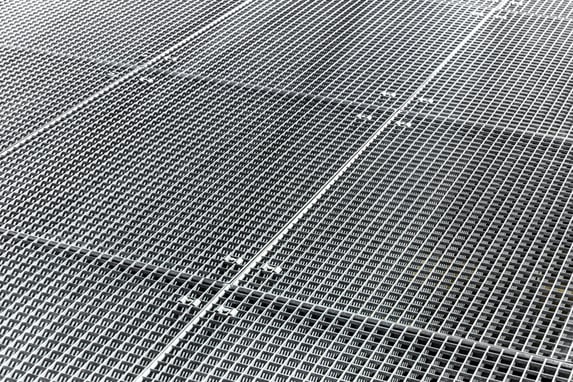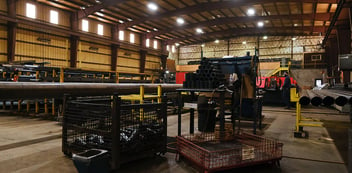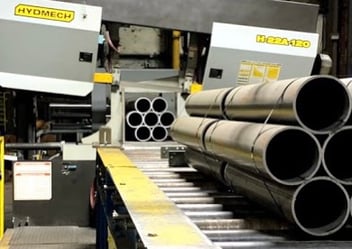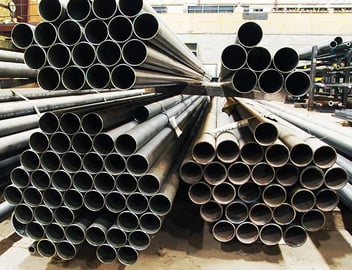6 Key Considerations When Purchasing Open Steel Floor Grating

Choosing the right open steel floor grating can make all the difference in the safety, strength, and performance of your project. With a wide range of applications across various industries, including construction, manufacturing, and architecture, steel grating flooring excels in both durability and versatility. But successfully selecting the right grating for your needs requires understanding key factors.
At State Line Supply, we aim to make your purchasing process seamless and straightforward. This guide will walk you through all the essential considerations, ensuring you’re well-prepared to obtain accurate pricing and receive the ideal product for your application.
What is Open Steel Floor Grating?
Open steel floor grating is a strong, low-maintenance material used for flooring, walkways, and platforms in industrial and commercial environments. Designed for maximum strength and drainage, it is constructed with bearing bars that provide structural support and cross rods that improve stability.
Applications for steel floor grating range from pedestrian walkways to industrial platforms and ventilation covers. Its ability to endure heavy loads, paired with customizable features, makes it a go-to option for engineers, architects, and procurement managers.
Why Accurate Information Matters When Ordering Steel Floor Grating
When contacting a supplier, providing accurate specifications is crucial to obtaining a precise quote (as well as safety) and receiving the correct materials for your project. Open steel floor grating is available in various configurations, so slight variations in specifications can significantly impact its suitability, cost, and lead time.
State Line Supply offers a wide selection of sizes and finishes for open steel floor grating. To assist you, we’ve outlined the six key factors to consider when placing your order, along with helpful guidance for each point.
6 Key Considerations When Purchasing Open Steel Floor Grating
1. Type of Grating
The first step is determining the type of grating that your project requires.
Different types of grating are suited to various applications, including:
- Welded steel grating: Ideal for heavy-duty applications due to its high strength and rigidity.
- Press-locked grating: Offers a clean, uniform look, often favored in architectural applications.
- Swage-locked grating: Known for its lightweight design while maintaining excellent load-bearing capacity.
Understanding your application needs will guide you toward the appropriate type.
2. Size of Bearing Bars (Depth and Width)
The bearing bars are the primary load-carrying members of open steel floor grating.
Their dimensions (both width and depth) directly influence the grating’s ability to handle loads:
- Depth impacts the grating’s load capacity.
- Width affects the overall durability and cost.
The appropriate bearing bar size depends on the expected load and usage of the flooring.
3. Span (Direction of Bearing Bars)
Understanding the span is important as it dictates the load distribution. The span is the direction in which the bearing bars run, and this determines how the grating will rest on supporting beams or structures.
It’s best to ensure the span aligns with the intended usage of the framework.
4. Dimensions of the Area
Precise dimensions of the installation area are important for getting materials that fit seamlessly.
Typical panel sizes at State Line Supply include:
- 2′ x 20′
- 3′ x 20′
For custom projects, suppliers like State Line Supply can provide alternative dimensions.
5. Finish Options (Painted or Galvanized)
Steel floor grating is available with either:
- Painted finish: Protects against standard wear and tear in less corrosive environments.
- Galvanized finish: A more durable coating for corrosion resistance, ideal for outdoor or high-moisture settings.
Your choice of finish will depend on the environment in which your installation is located.
For example:
A galvanized finish is essential for areas exposed to harsh weather or chemical exposure.
6. Surface Type (Smooth or Serrated)
The surface finish of your grating enhances safety and functionality:
- Smooth grating: best suited for indoor or dry environments with minimal slip-resistance requirements.
- Serrated grating: provides enhanced grip, making it suitable for environments prone to moisture, oil, or debris.
Determining the safest option for your application ensures compliance with safety regulations and prevents accidents.
How to Order Open Steel Floor Grating from State Line Supply
To streamline your ordering process with State Line Supply, here’s a quick checklist of information you should have ready:
- Type of Grating (Welded, Press-Locked, or Swage-Locked)
- Bearing Bar Size (Depth and Width)
- Span Direction
- Area Dimensions
- Finish (Painted or Galvanized)
- Surface (Smooth or Serrated)
Resource: For more detailed specifications, visit page #61 of our product catalog.
Making the Right Choice for Your Project
Selecting the correct open steel floor grating is an essential step in creating a durable, safe, and efficient environment. By considering the type, dimensions, finishes, and surfaces in advance, you position yourself for a smoother purchasing process and a successful project outcome.
At State Line Supply, we’re here to support you at every step. From helping you choose the right options to delivering your materials promptly, our goal is to make the steel grating buying process as seamless as possible.
Looking for guidance? Contact our team or download our catalog to explore your options today!



